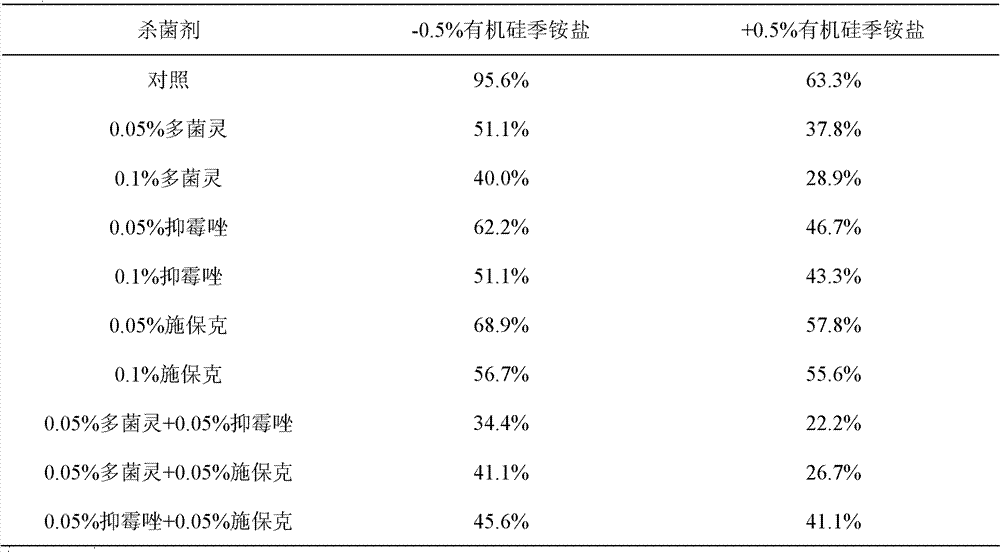Litchi preservative and litchi preservative method
A fresh-keeping method and technology of a fresh-keeping agent, which are applied in the fields of fruit and vegetable fresh-keeping, food preservation, and fruit/vegetable preservation by freezing/refrigeration, can solve the problems of high technological level, uncontrollable and high use cost.
- Summary
- Abstract
- Description
- Claims
- Application Information
AI Technical Summary
Problems solved by technology
Method used
Image
Examples
Embodiment 1
[0026] Select the lychee fruit that is harvested in sunny days, eight mature, without mechanical damage and damage by diseases and insect pests, and the fruit is put into quaternary ammonium salt containing 1% (mass fraction), 0.05% (mass fraction) Shibaoke, 0.05% (mass fraction) Soak in imazalil solution (the solvent is water) for 2 minutes, remove it and put it in plastic, pre-cool at 2°C for 6 hours, then pack it with a polyethylene film with a thickness of 0.03mm, and store it at 4°C. After 35 days, the litchi fruit rot rate is below 5%.
Embodiment 2
[0028] Select the lychee fruit that is harvested in sunny days, eight mature, without mechanical damage and damage by diseases and insect pests, and the fruit is put into the fruit containing 0.5% (mass fraction) organic silicon quaternary ammonium salt, 0.05% (mass fraction) carbendazim, 0.05% (mass fraction) Soak in Spock solution (the solvent is water) for 3 minutes, take it out and put it in plastic, pre-cool at 4°C for 12 hours, then pack it with polyethylene film with a thickness of 0.03mm, and store it at 4°C. After 35 days, the litchi fruit rot rate is below 5%.
Embodiment 3
[0030] Select the lychee fruit that is harvested in sunny days, eight mature, without mechanical damage and damage by diseases and insect pests, and the fruit is put into the fruit containing 0.5% (mass fraction) organic silicon quaternary ammonium salt, 0.05% (mass fraction) carbendazim, 0.05% (mass fraction) Soak in imazalil solution (the solvent is water) for 3 minutes, remove it and put it in plastic, pre-cool at 4°C for 12 hours, then pack it with a polyethylene film with a thickness of 0.03mm, and store it at 4°C. After 35 days, the litchi fruit rot rate is below 5%.
PUM
 Login to View More
Login to View More Abstract
Description
Claims
Application Information
 Login to View More
Login to View More - R&D
- Intellectual Property
- Life Sciences
- Materials
- Tech Scout
- Unparalleled Data Quality
- Higher Quality Content
- 60% Fewer Hallucinations
Browse by: Latest US Patents, China's latest patents, Technical Efficacy Thesaurus, Application Domain, Technology Topic, Popular Technical Reports.
© 2025 PatSnap. All rights reserved.Legal|Privacy policy|Modern Slavery Act Transparency Statement|Sitemap|About US| Contact US: help@patsnap.com

